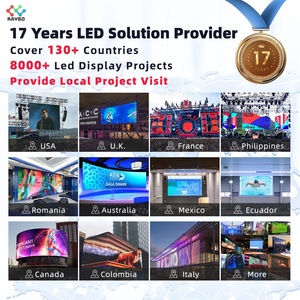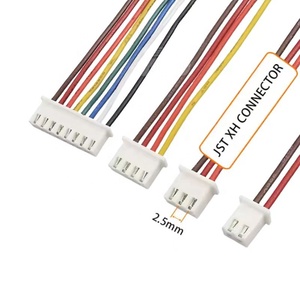
All categories
Featured selections
Trade Assurance
Buyer Central
Help Center
Get the app
Become a supplier

(11142 products available)














































LED lights are widely used due to their energy efficiency and long lifespan. They can be integrated into wire system lighting for both residential and commercial applications. There are different types of wire system LED lights, including:
Single-cable LED lights
These lights have a single cable supporting both the power and the LED lighting. The cable runs from the power source to the light, and multiple lights can be connected in a row. They can also be referred to as inline lights. The design makes them easy to install and cost-effective for projects requiring limited lighting. They also offer a clean and minimalist look because of the reduced wiring.
Dual-cable LED lights
These wire system LED lights use two cables. One cable is for the power supply, and the other is for the data or ground connection. They are commonly used in settings that require higher power or have more complex lighting controls. The design allows for individual control of each light, offering more flexibility in adjusting brightness and color. They are suitable for applications where advanced features like dimming and RGB lighting are needed.
Magnetic strip lights
Magnetic track lights are a type of LED lighting that combines a magnetic track system with LED lights. The track is installed on the ceiling or wall, and the LED lights have magnets that allow them to easily attach and detach from the track. They provide flexibility in positioning and reconfiguring the lights. They are suitable for retail stores because they can direct light to different merchandise. Additionally, they have a modern look and are energy efficient.
3D wire lights
These lights have a more complex design using multiple wires to create a three-dimensional effect. They are commonly used for decorative purposes in architectural lighting. They create a sculptural effect and are ideal for making statement pieces in lighting fixtures. Moreover, they offer dynamic lighting because the 3D structure allows light to be displayed in different angles.
Suspended LED lights
These are large LED lights suspended from ceilings using a wire system. They are commonly used in industrial and commercial settings. The wire system supports the lights from the ceiling and provides stability. They can be positioned at different heights. Additionally, they provide a good amount of light, making them ideal for warehouses and retail spaces. They are energy efficient and can be used in spaces with low ceilings.
LED light systems are becoming more popular because of their energy-saving capabilities. Below are some of their important features and functions.
Modular Design
Modular design is one of the important features of wire LED light systems. It allows for easy customization and scalability. This design includes individual LED modules connected by wires. This allows users to customize the layout and design according to their needs and preferences. Users can add or remove modules without complicated rewiring.
Dimmability
Dimmability is an important feature of wire LED systems. It allows users to adjust the brightness of the lights. This feature adds to the ambiance and improves energy efficiency. The dimming options range from simple dimmer switches to advanced smart lighting controls. This allows a wide range of brightness levels. Dimming the lights can reduce power consumption. Lowering the brightness can reduce the amount of electricity used compared to running the lights at full capacity. This is especially beneficial for large-scale installations or spaces that do not require maximum brightness at all times.
RGB Capabilities
Wire LED systems with RGB capabilities allow users to create a wide range of colors and lighting effects. RGB stands for red, green, and blue. These are the three colors that can be combined to produce different colors. RGB LED wire systems have separate LEDs for red, green, and blue. These LEDs can be mixed to produce different colors, including white and other shades. RGB LED systems create dynamic lighting displays. These include gradual color changes, color fades, and various color combinations.
Smart Integration
Smart integration allows the LED lighting system to work with other smart devices and platforms. This makes it easier to control and customize the lights. The wire LED system can be controlled through smartphone apps, voice assistants, or home automation systems. This makes it easier to adjust brightness, color, and lighting schedules. It also enhances the user experience.
Power Supply
Power supply is an important feature of LED systems. It ensures the lighting system works efficiently and reliably. LED systems require a constant voltage or current to work properly. A power supply converts the AC voltage to DC. It provides the necessary voltage or current to the LED lights. The power supply affects the performance of the LED lights. A good power supply will enhance their efficiency, lifespan, and brightness.
LED light strips are gaining popularity due to their versatility and energy-saving features. Below are some common usage scenarios for led light strips.
Architectural Lighting
LED light strips can be used to highlight the unique features of a building and its architectural elements. For instance, installing LED strip lights on the corners of a building can create a dramatic lighting effect and enhance the building's beauty. Additionally, these lights can be placed on beams, ceiling coves, and under windows to create a soft ambient glow.
Decorative Lighting
These lights are popularly used for decorative purposes. They add color to an area and create a unique atmosphere. LED strips come with a remote control that allows users to change the color according to their preferences. These light strips are also installed in furniture such as shelves, cabinets, and headboards to offer a stylish glow and enhance the furniture's beauty.
Task Lighting
LED light strips are installed in workspaces to provide adequate lighting for tasks. For instance, they can be installed under kitchen cabinets to illuminate countertops for food preparation. They can also be installed on desks to light up the working area without causing glare.
Accent Lighting
Wire systems LED can be integrated into a lighting design to offer accent lighting. The lights draw attention to artwork, architectural features, or landscape elements. For instance, low-level LED lighting can be fixed on a staircase to enhance its beauty and ensure safety by illuminating the steps.
Outdoor Lighting
LED light strips can be placed in outdoor areas such as patios, decks, and gazebos to create an ambient atmosphere. They can also be installed on pathways and driveways to offer illumination and enhance the area's beauty. In addition, LED strip lights with waterproof features can be used for landscape lighting to illuminate trees, shrubs, and water features.
Retail Lighting
These lights are used in retail stores to create an inviting atmosphere for customers. They are installed on shelves and display units to illuminate products and make them more appealing to customers. Additionally, LED light strips can be used to light up signage to enhance visibility and attract potential buyers.
There are a lot of things that business owners need to consider when buying an LED lighting system in bulk. Here are some of them:
Safety
One of the most important factors to consider is the safety of the lighting system. The wire system should be fire resistant. It should also have features like short circuit protection and overcurrent. This is because adverse electrical incidents can lead to significant loss when it occurs in a lighting system.
Quality
The wire system's quality will determine its performance and longevity. Business owners should look at the brand's reputation. They should also look at the product reviews to get an idea of the wire system's durability. They can also contact the vendor for recommendations on quality products before placing their orders.
Wire length
The wire length will determine the number of lights in the system. It will also affect the amount of power the system uses. Vendors should choose wire systems with different wire lengths to satisfy the diverse needs of their customers.
Power supply
Buyers need to ensure that the power supply is compatible with their LED lights. They also need to ensure that it meets the required voltage and current. Some power supplies are suitable for smaller LED setups. At the same time, others are ideal for larger setups.
Customization
Business owners should look for LED lighting systems that allow customization. For instance, a lighting system that allows the owners to adjust the brightness level and color temperature to suit different needs and occasions. Such a system can be used in a wide range of settings, from residential to commercial.
Installation process
The installation process is not the same for all LED lighting systems. Business owners should look for lighting systems that are easy to install. More specifically, systems that come with installation accessories like clips, connectors, and mounting hardware.
Maintenance
LED lighting systems don't require a lot of maintenance. Nonetheless, business owners should look for systems that only require basic maintenance. They should ensure that the components are easily accessible so they can be cleaned and inspected with ease.
Q1: What are the benefits of using an LED lighting system?
A1: LED lights offer several benefits, including a longer lifespan, lower energy consumption, and versatility. They can be used in various applications, from task lighting to accent lighting, and provide bright, even illumination.
Q2: What does LED system voltage mean?
A2: An LED system's voltage refers to the electrical potential difference required to power the LED lights. Common voltages for LED systems include 12V and 24V. Lower voltages are safer for handling and are often used in residential lighting applications.
Q3: What does wire gauge mean in an LED lighting system?
A3: The wire gauge indicates the thickness of the wire. A lower gauge number means a thicker wire. The wire thickness can affect the LED system's performance, with thicker wires allowing more current to flow and reducing voltage drops over longer distances.
Q4: What is a wire harness for LED lights?
A4: A wire harness for LED lights is a pre-assembled bundle of wires, connectors, and other components that facilitate the connection of LEDs to a power source. It helps streamline the installation process and can improve the overall aesthetics by reducing wire clutter.
Q5: What are the safety considerations for LED lighting systems?
A5: When using an LED lighting system, it is important to consider the voltage, wire gauge, and current. 12V LED systems are safer for handling than 120V or 240V systems, commonly used in household lighting. Additionally, using the appropriate wire gauge for the current level is important to prevent overheating and potential fire hazards.